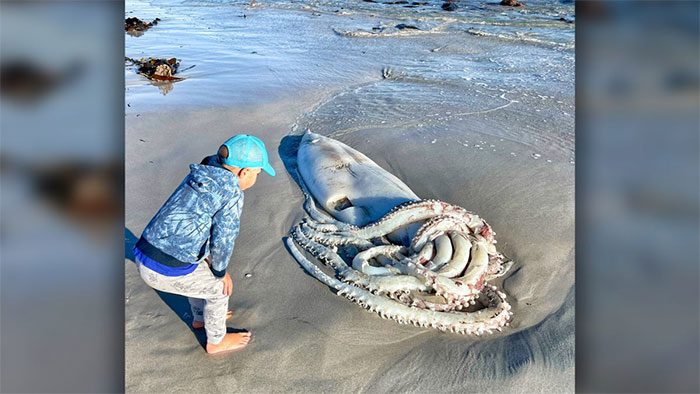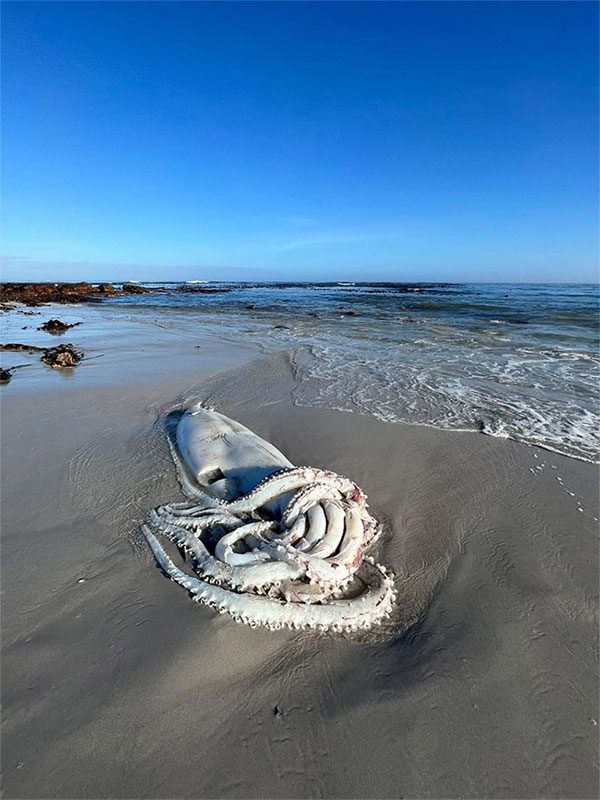Scientists report that the giant squid found on the beach in South Africa measures over 3.5 meters long and has numerous wounds on its body, likely caused by a ship collision.

The giant squid measuring over 3.5 meters washed ashore at Long Beach, South Africa. (Photo: Alison Paulus)
Recently, beachgoers at Long Beach, Kommetjie, South Africa, encountered a giant squid carcass on the sand. According to Alison Paulus, a resident of Cape Town and founder of the wildlife conservation organization Volunteer and Explore, the squid’s body measures about 2.2 meters. Including its tentacles and arms, the squid could reach up to 3.5 meters in length.
The giant squid is one of the largest invertebrates on Earth. Despite its enormous size, it is one of the most elusive creatures on the planet, typically residing at depths of 300 to 1,000 meters, rarely surfacing, making it difficult to spot. Its eyes, as large as dinner plates, are among the biggest of any living creature, allowing the giant squid to see in the pitch-black waters.
For centuries, the only information scientists had about this species came from studying carcasses washed ashore or remnants found in the stomachs of sperm whales—its natural predator. It wasn’t until 2004 that humans first observed a live giant squid.

The squid carcass was discovered with deep wounds, suspected to be from a ship collision. (Photo: Alison Paulus)
The recently discovered squid was stranded at night after suffering multiple injuries, possibly from a collision with a commercial or fishing vessel. Paulus and her colleagues found a long gash above the squid’s tentacles, likely caused by the propeller of a boat. Wildlife experts confirmed that this was a female squid, estimated to be around two years old at the time of its death. Giant squids can live up to 5 years and reach lengths of 13 meters. It may have been struck by a ship while at the surface, according to Jon Friedman, a wildlife officer from the Cape of Good Hope Society for the Prevention of Cruelty to Animals (SPCA).
When SPCA experts arrived at the scene, local fishermen had already removed the squid’s eyes and tentacle parts. Most of the remaining giant squid carcass was chopped up and thrown back into the sea. Previously, experts had sent some tissue samples to the Iziko South African Museum in Cape Town for DNA analysis. Currently, the museum is preserving the remains of 19 other giant squids.


















































